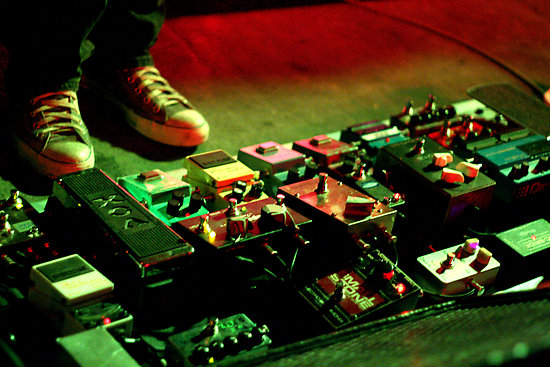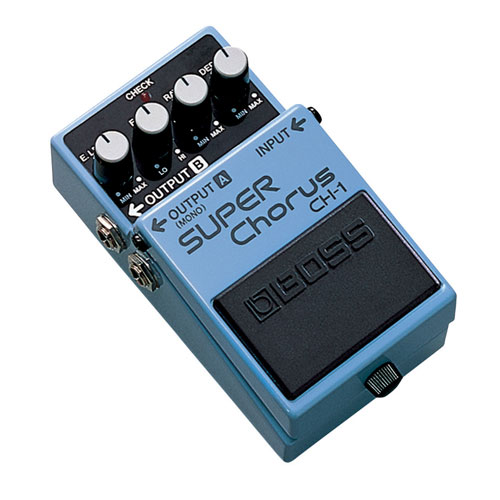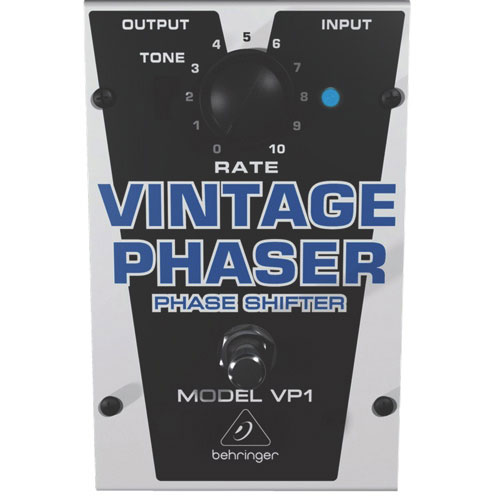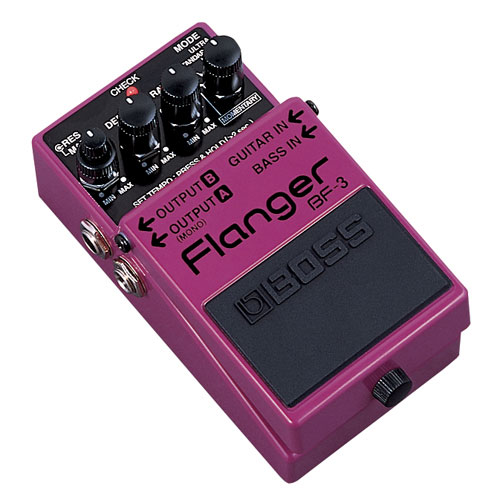 So far we have done a very general primer on the vast assortment of guitar effect pedal types available to you as you attempt to recreate the sounds of your guitar heroes or simply to unleash that killer tone that so far exists only inside your head. We then took an in-depth look at pedals that boost which you can follow the link to if you haven’t already done so. This blog is going to take a closer look at the so called “modulation” style of stompboxes so I will present a few different ways that we can approach adding chorus, flange, phase, vibrato, and tremolo style effects into our effects chain and some of the considerations we need to keep in mind when doing so.
So far we have done a very general primer on the vast assortment of guitar effect pedal types available to you as you attempt to recreate the sounds of your guitar heroes or simply to unleash that killer tone that so far exists only inside your head. We then took an in-depth look at pedals that boost which you can follow the link to if you haven’t already done so. This blog is going to take a closer look at the so called “modulation” style of stompboxes so I will present a few different ways that we can approach adding chorus, flange, phase, vibrato, and tremolo style effects into our effects chain and some of the considerations we need to keep in mind when doing so.
 Arguably the most used of the modulating pedals is the chorus pedal. While on the surface it seems to function in the same way as a delay or echo effect, it differs in that while those pedals are applied to the entire raw signal, the chorus (as well as the others) is able to split the signal in two and then applying a very short (compared to the delay pedal anyway) repeat in the millisecond range to one of the signals while leaving the other untouched. The end result is a very lush output that provides a thicker signal that makes it sound as if several guitars are playing that part. The control knobs on any of the different chorus pedals will allow you to change or adjust the depth of delay and vibrato that is added as well as adjust how the two signals blend together. Thus, it can be a very subtle effect – a lot of the Red Hot Chili Peppers songs feature this – or it can drench the song in the effect a la Come as You Are by Nirvana. Bands like The Pretenders and The Cure use significant amounts of the chorus effect and most of the 80s glam metal power ballads use chorus to create that atmospheric feeling as well. It is a very versatile effect that is also used to create a stronger juxtaposition between songs that feature clean and distorted parts.
Arguably the most used of the modulating pedals is the chorus pedal. While on the surface it seems to function in the same way as a delay or echo effect, it differs in that while those pedals are applied to the entire raw signal, the chorus (as well as the others) is able to split the signal in two and then applying a very short (compared to the delay pedal anyway) repeat in the millisecond range to one of the signals while leaving the other untouched. The end result is a very lush output that provides a thicker signal that makes it sound as if several guitars are playing that part. The control knobs on any of the different chorus pedals will allow you to change or adjust the depth of delay and vibrato that is added as well as adjust how the two signals blend together. Thus, it can be a very subtle effect – a lot of the Red Hot Chili Peppers songs feature this – or it can drench the song in the effect a la Come as You Are by Nirvana. Bands like The Pretenders and The Cure use significant amounts of the chorus effect and most of the 80s glam metal power ballads use chorus to create that atmospheric feeling as well. It is a very versatile effect that is also used to create a stronger juxtaposition between songs that feature clean and distorted parts.

The phase pedal and the flange pedal are closely related to the chorus effect and in fact if you go online, you will be able to read many different discussions arguing over whether it is in fact a chorus or a flange or a phase effect on many songs, including Come as You Are. I have always been under the impression that Kurt Cobain used a chorus and a distortion in his live set up but frankly, you could replicate the song’s tone with either a flange or a chorus. The same discussions also talk about Van Halen’s earlier songs and whether they are flange or phase. Both of the effects split the signal in two equal parts and then work their respective magic on one of those two signals. The phase effect alters the one signal by shifting it out of phase (hence the name) through different frequencies and back again which is where that familiar “woosh” comes from.

The flange functions in the same way but offers more control of the relationship between the clean and the altered signal. By allowing you to control the spectral distances between the in and out of phase signals you can create a heavier and a more distinct woosh through your sound and the signal’s peaks and valleys. Tough to imagine via the printed word but fun to plug in and play as the aural possibilities are fascinating.
The tremolo and vibrato pedal effects also modulate the signal from your guitar. Essentially, the tremolo pedal works as a volume swell similar to rapidly rolling the volume knob on your guitar up and down. You can control the rate on your pedal to create a smooth or a pulsing effect. One of the better examples of this in practice is the haunting theme song from Twin Peaks. The vibrato effect doesn’t alter the volume like the tremolo but alters the pitch in a way that emulates the warble you get from wiggling your fretted finger on the neck. While you can control the amount of effect that is added to the signal, I have always found that a more subtle approach suits the vibrato pedal. As always, however, play around and experiment to find the sound that suits your needs. How can you do this? Head on in to your local Best Buy and check out all of the different brands of pedals that modulate your guitar signal as they all have their own tone and idiosyncrasies. Besides, experimenting with guitar effects is just plain fun!



